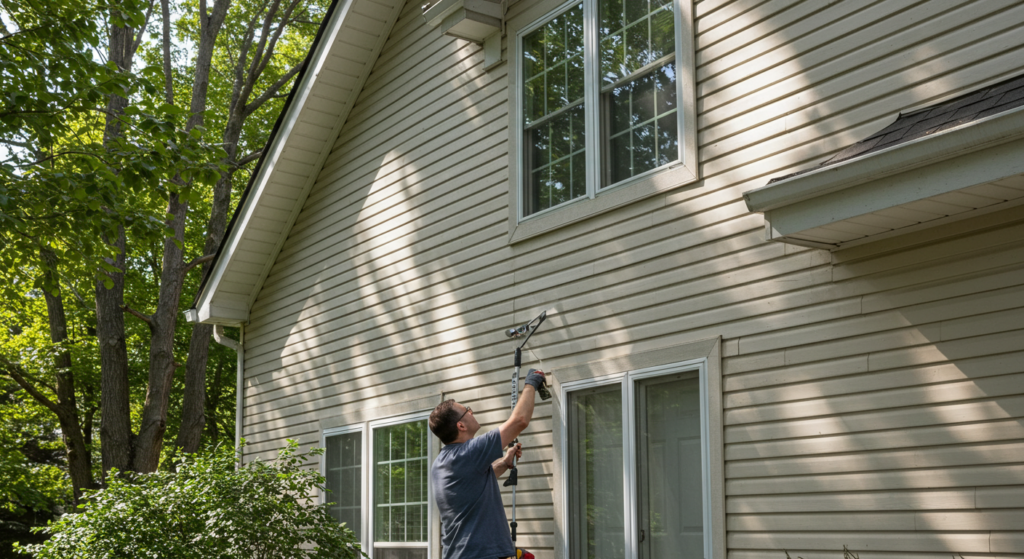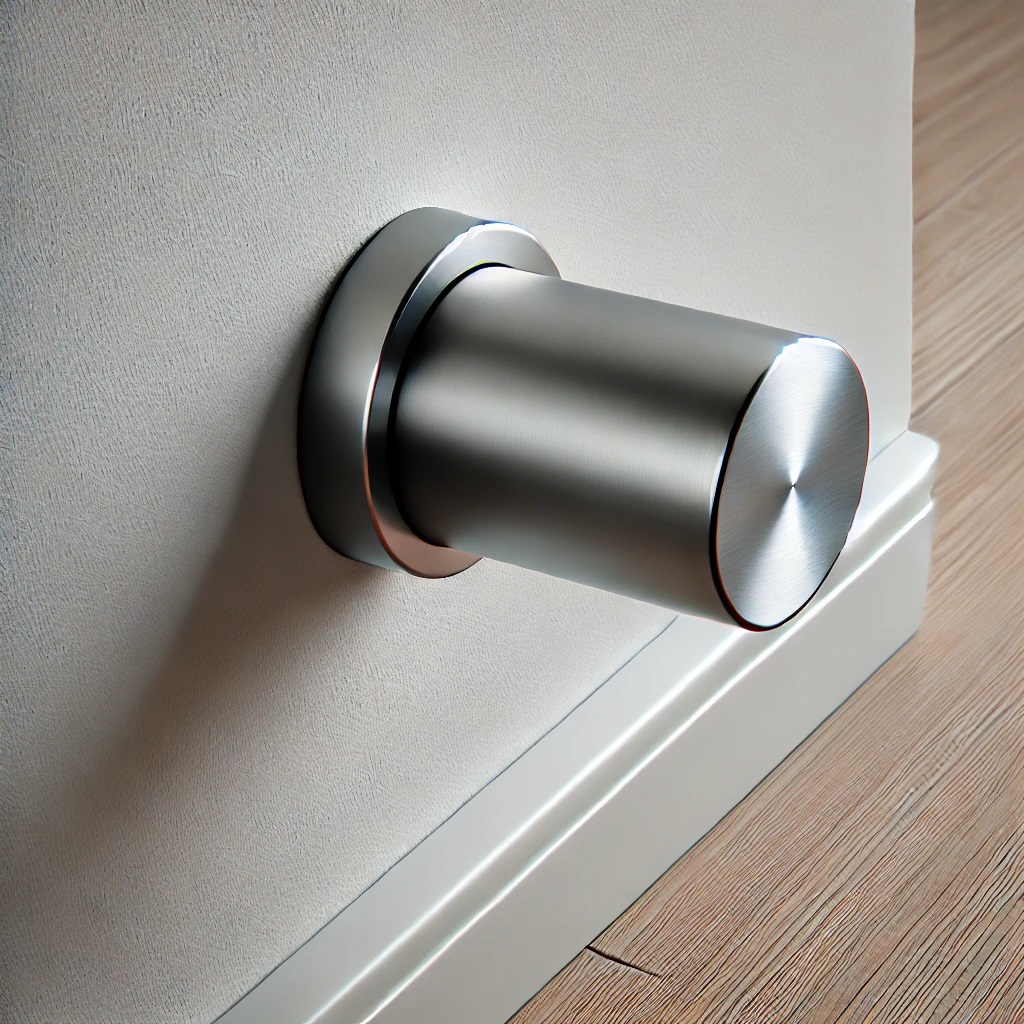Your home’s siding serves as a critical line of defense against the elements. It not only enhances your home’s curb appeal but also provides protection against the harsh weather conditions that can cause significant damage over time. Whether it’s the relentless sun, torrential rain, freezing temperatures, or high winds, your siding takes a beating year-round. Fortunately, there are several proactive steps you can take to protect your siding from weather damage and ensure your home remains safe and visually appealing.
1. Choose Durable Siding Materials
The first step in protecting your home’s exterior is selecting the right type of siding. Different materials have varying levels of resistance to weather conditions:
- Vinyl siding: It is durable, affordable, and resistant to fading, moisture, and high winds. However, extreme heat or cold can cause it to crack, so it’s essential to ensure proper installation.
- Wood siding: While wood is aesthetically appealing, it requires regular maintenance to prevent moisture absorption, which can lead to rot and warping.
- Fiber cement siding: This is a highly durable material that resists cracking, warping, and fire damage. It’s an excellent choice for homes in areas with extreme weather conditions.
- Metal siding: Metal options like aluminum and steel can withstand high winds, heavy rains, and fire. However, they may be prone to dents in hail-prone areas.
Choosing a material based on your local climate can go a long way in preventing weather-related damage.
2. Perform Regular Inspections
The best way to catch issues early is to regularly inspect your siding. Look for signs of damage, such as cracks, holes, or peeling paint, which can lead to water infiltration. Make sure to check areas around windows and doors, as these are vulnerable spots where moisture can seep in. Early detection allows you to make minor repairs before they become more costly and extensive.
If you notice any cracks or warping, it’s important to address them immediately to prevent further damage. Small repairs done early on can save you from larger, more expensive fixes down the road.
3. Seal Gaps and Cracks
Even the smallest gaps or cracks in your siding can let water in, which can lead to mold, mildew, and structural damage over time. One of the simplest ways to protect your siding is to seal any gaps or cracks you find. Caulking around windows and doors is especially important, as these areas are prone to weather damage.
Consider using high-quality caulk or sealant designed specifically for siding materials to ensure the best protection. Regularly reapply caulking as needed, especially after harsh weather conditions.
4. Clean Your Siding Regularly
Dirt, grime, and algae can accumulate on your siding over time, which can cause long-term damage if not cleaned. Regularly washing your siding helps maintain its integrity and appearance. Use a gentle pressure washer or a garden hose with a cleaning solution designed for your specific siding material. Avoid using high-pressure washers, as they can cause damage to delicate siding materials.
In areas with high humidity or frequent rainfall, mold and mildew can develop on your siding, which can cause discoloration and rot. Removing these contaminants promptly can help maintain your siding’s appearance and prevent moisture buildup that leads to damage.
5. Trim Back Trees and Shrubs
Overhanging trees and shrubs can pose a threat to your siding. In high winds or storms, branches can scrape against the siding, causing scratches or dents. Additionally, the leaves and debris that fall from trees can accumulate in the crevices of your siding, leading to mold or mildew growth.
To avoid this, trim any branches that come too close to your home and remove debris regularly. This will reduce the likelihood of damage and keep your siding looking fresh and clean.
6. Install Protective Barriers
Installing protective barriers around your home can significantly reduce the impact of extreme weather conditions on your siding. For example, storm shutters can protect your windows and siding from high winds and debris during hurricanes or tornadoes. Additionally, installing a rain guard or flashing around your home can redirect water away from the siding, preventing water damage and rot.
7. Ensure Proper Ventilation
Poor ventilation can lead to the buildup of moisture behind your siding, which can result in rot, mold, and mildew growth. Ensure that your home is properly ventilated, particularly in areas like the attic, crawl space, and basement. Proper airflow helps to prevent moisture buildup and keeps your siding dry and intact.
8. Maintain Your Gutters and Downspouts
Clogged gutters can cause rainwater to overflow, which can then pour down over your siding and potentially cause water damage. Regularly clean your gutters to ensure proper water drainage and prevent it from spilling over onto your siding. If your gutters are old or damaged, it may be time to replace them to keep your siding safe from water damage.
In areas with heavy rainfall, it’s especially important to ensure that downspouts direct water well away from the foundation of your home.
9. Protect Against Wind Damage
High winds can cause severe damage to your siding, particularly in areas prone to storms or tornadoes. To protect against wind damage, ensure that your siding is securely fastened to your home and that there are no loose panels or sections. If you’re in an area prone to high winds, consider reinforcing your siding with extra fasteners or opting for materials designed to withstand stronger forces.
For homes experiencing significant wind damage, wind damage roof repair in Olney is available to address any issues with your roof that may be affecting your siding’s protection.
Conclusion
Protecting your siding from weather damage requires a combination of regular maintenance, timely repairs, and proper installation. By following these steps, you can extend the lifespan of your siding, reduce the likelihood of costly repairs, and maintain your home’s aesthetic appeal. Whether you’re dealing with high winds, extreme temperatures, or heavy rainfall, taking proactive measures will ensure that your siding stands up to the elements and continues to protect your home for years to come.



